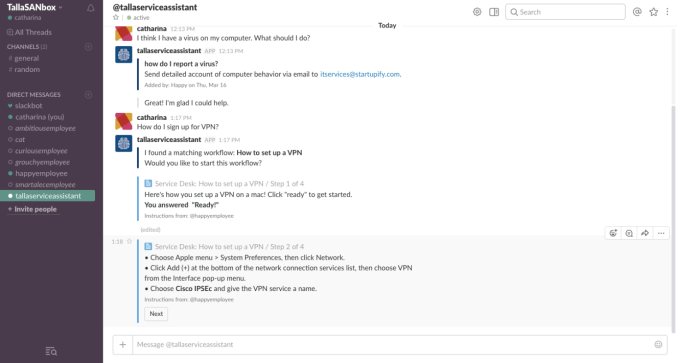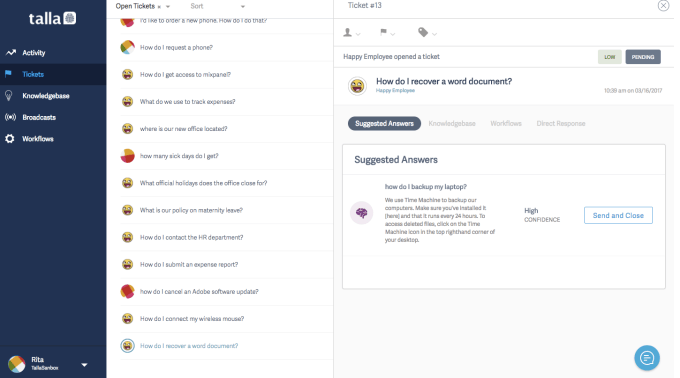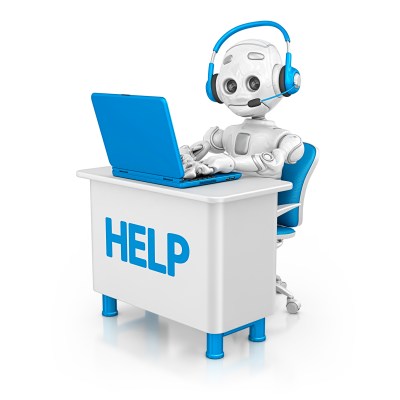Talla, a Cambridge, Mass. startup, wants to help companies ease into artificial intelligence, and they have come up with a new service assistant bot that gives companies whatever degree of intelligence-fueled power they are looking for.
The tool, called ServiceAssistant, works as an IT or HR help desk inside of Slack or Microsoft Teams and gives customers a few options on how to use it. First of all, you can run it like a traditional service desk. The user sends requests through ServiceAssistant where it gets processed and answered by a human.
In the second scenario, the customer eases into automation where the ServiceAssistant provides an automated answer, which gets checked by a human before being sent through to the questioner, or at the highest level of automation the system simply sends an answer when the confidence threshold is above a certain level set by the customer.
CEO and co-founder Rob May says the company deliberately used an in-house service model instead of live customers because after reviewing the technology, he felt that the current Natural Language Processing (NLP) technology was better suited to this approach.
The Talla ServiceAssistant looks like any user on Slack or Microsoft Teams. As with any Slack or Teams bot, employees can interact with it by asking questions. If it’s tuned to be an HR assistant, for example, an employee might ask, “Do we have Labor Day off?” If the system has been configured to answer automatically, it’s the kind of question that it can answer with a high degree of certainty and can simply tell the employee yes or no.
In an IT Help Desk approach, the questions could get trickier such as, “How I get access to QuickBooks?” In this case, the system might find multiple matches, and if it were set for automated responses, it could ask the questioner to choose the most relevant one, or it could ask if they want to open a help desk ticket to move to the question to a human for processing.

Photo: Talla
The system is tuned to ask questions when it doesn’t understand and to learn from the responses. Since people ask questions in non-standard ways, the system can also learn that “Are we open Labor Day?” is the same as “Do we have Labor Day off?” or “Is the office closed on Labor Day?”
May says even in companies where there are high usage rates for Slack or Teams, there could be as many as 20 percent of employees not using that tool, so they’ve also built a Web App and allow email, but the ultimate goal is to get people into the conversational tools to ask the questions — and do it in an automated way as possible.
The company wants to be more than a conversational bot, however. It wants to be a central place for processing IT and HR requests. That means having a ticket system, a knowledge base and the ability to broadcast to employees, for example, when the system is going down for maintenance or the office is closed for a holiday.

Photo: Talla
May says among his customers Slack is definitely the more popular of the two offerings today, but he believes it’s important to look at the different conversational tools and continually assess where that market is going as it’s still being established.
“What does that [conversational market] fragmentation look like int two years is one of our biggest strategic worries,” May says.
The company is very much a startup with 16 employees. It’s raised $4.5 million. May was previously co-founder at Backupify, a cloud startup that was sold to Datto in 2014.
